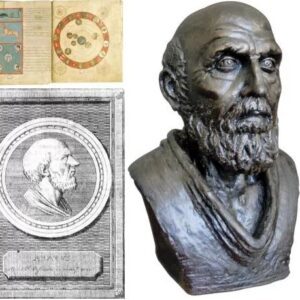The spherical stones of 2.8 billion years old and suspicion about the suppressed history of human civilization.
Mysterious billion-year-old spheres in South African mines
At a mining site in South Africa, the appearance of 4 spherical objects that do not belong to this planet has stunned the world.
According to Epoch Times, Oopart (out of place artifact) is a term used to refer to prehistoric objects discovered in many different places around the world that have technical capabilities that exceed the era in which they were created. Ooparts often make scientists who follow conventional thinking headaches, stimulating them to come up with new theories to replace them while also sparking many debates.
Klerksdorp Spheres
Michael Cremo, a prehistoric cultural researcher, traveled around the world to gather information about oopart artifacts. In 1984, Cremo contacted Roelf Marx, the manager of the Klerksdorp Museum (South Africa), to study the strange spherical objects called Klerksdorp spheres that were being kept there. They were found in a South African mine. Cremo compiled his findings into the famous book “Forbidden Archaeology: The Hidden History of the Human Race.”
Marx described the Klerksdorp spheres as being about 2.8 billion years old, with a very hard surface and a fibrous structure inside. Marx found them quite strange and difficult to understand.

Klerksdorp spheres (top left and bottom right), Moqui marbles (top right and bottom left)
The Klerksdorp spheres, artifacts that are 2.8 billion years old and measure 30-50mm in size, have perfectly symmetrical shapes with rigid grooves that cannot be scratched as if they were hand-carved with great skill. Inside the spheres is a coal-like substance that is soft and fluffy like cotton.
According to Cremo and some other researchers, the Klerksdorp spheres provide evidence that intelligent life existed on Earth long before we thought it did.
Based on the theory of evolution, the spheres found in Africa date back to a time before humans existed on Earth, which is very difficult to explain based on our current knowledge.
So, is it true that the Klerksdorp spheres are additional evidence that intelligent life existed on Earth long before the previously recognized era?

There are various hypotheses regarding the Klerksdorp spheres. Some argue that they are the result of a process of mineral accumulation and hardening. Dr. Karrie Weber from the University of Nebraska-Lincoln (USA) suggests that bacteria may have contributed to the formation of the spheres. Geologist Dave Crosby initially proposed a theory of an asteroid impact that scattered the molten spheres and then condensed them on the sand. Many people believe that the Klerksdorp spheres formed through a natural process called concretion (the accumulation and hardening of minerals)
Although some Klerksdorp spheres have an elliptical shape with rough veins around the central area, others have a more symmetrical shape and proportion. The grooves around them look very straight, as if someone had carved them by hand. It is very unlikely that they formed naturally, according to supporters of the hypothesis that intelligent beings created the Klerksdorp spheres.
The Moqui marbles, or Moqui balls, are similar spherical stones found in Utah, with an age of about 2 million years. According to legend, they were left behind by the ancestors of the Hopi Native American tribe as a message to their loved ones, indicating that they were still happy and stable.

Cross-section of a Moqui ball with a sandy inner core and a hard outer shell made of iron oxide.
The Moqui ball has a core made of sand and a hard outer shell made of iron oxide. Heinrich’s experiment on one of the Klerksdorp spheres showed that it was composed of hematite (a mineral of iron oxide). Heinrich also discovered another Klerksdorp sphere made of the mineral wollastonite along with hematite and goethite, a water-bearing iron oxide.
Cremo and some other researchers support the view that ooparts are evidence of an advanced prehistoric civilization. They believe that the scientific community needs to be more courageous and willing to acknowledge evidence that may contradict common beliefs.





